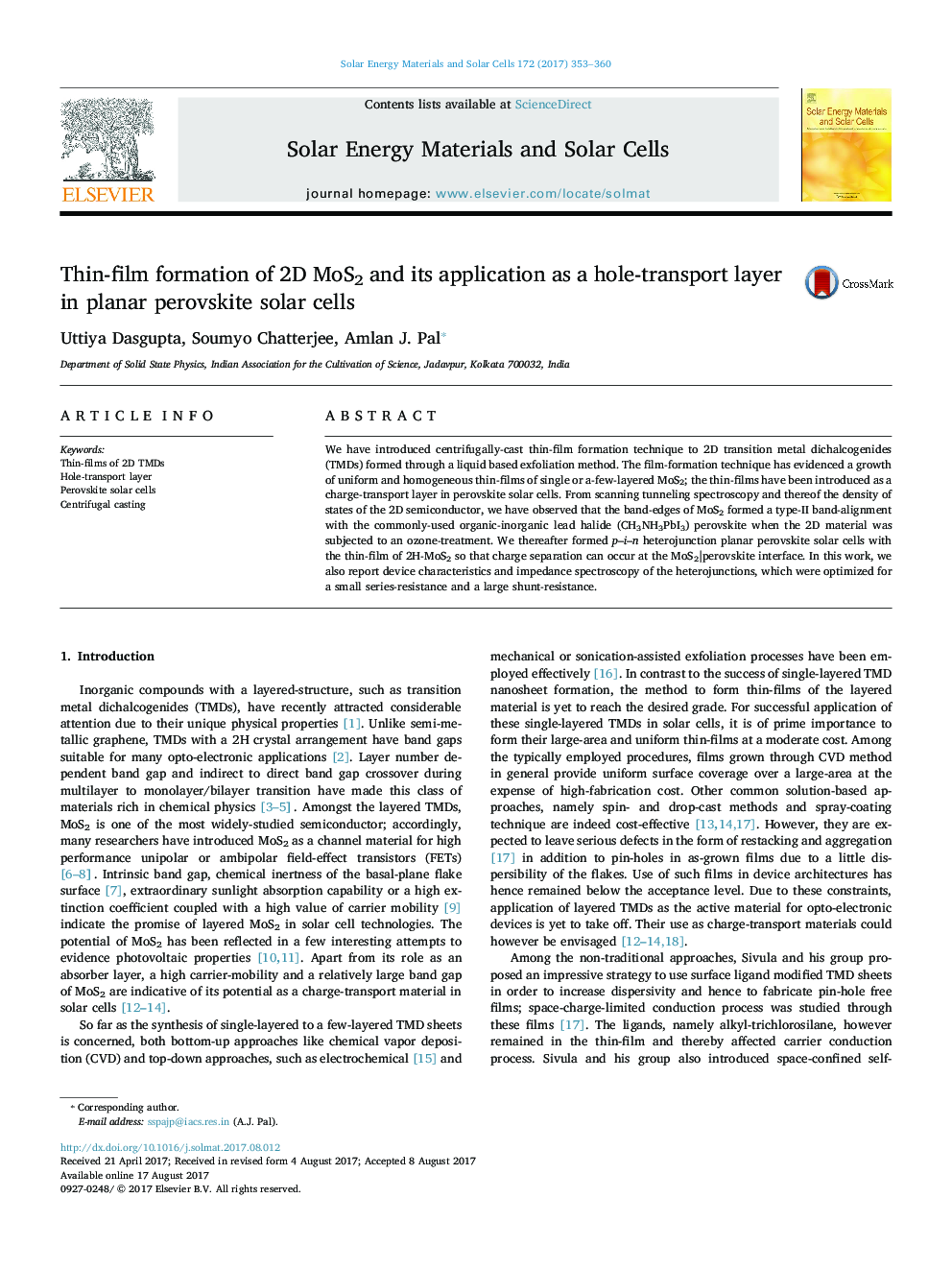| Article ID | Journal | Published Year | Pages | File Type |
|---|---|---|---|---|
| 6456969 | Solar Energy Materials and Solar Cells | 2017 | 8 Pages |
â¢Exfoliated TMD nanosheets were centrifugally casted to form uniform large area thin-films.â¢Band-edges of exfoliated MoS2 were determined from STS and correspondingly density of states.â¢Work-function of the nanosheets was tuned by mild plasma treatment to form type-II band-alignment with CH3NH3PbI3.â¢Thin-films of MoS2 nanosheets were introduced as a hole-transport layer in inverted planar perovskite solar cells.
We have introduced centrifugally-cast thin-film formation technique to 2D transition metal dichalcogenides (TMDs) formed through a liquid based exfoliation method. The film-formation technique has evidenced a growth of uniform and homogeneous thin-films of single or a-few-layered MoS2; the thin-films have been introduced as a charge-transport layer in perovskite solar cells. From scanning tunneling spectroscopy and thereof the density of states of the 2D semiconductor, we have observed that the band-edges of MoS2 formed a type-II band-alignment with the commonly-used organic-inorganic lead halide (CH3NH3PbI3) perovskite when the 2D material was subjected to an ozone-treatment. We thereafter formed p-i-n heterojunction planar perovskite solar cells with the thin-film of 2H-MoS2 so that charge separation can occur at the MoS2|perovskite interface. In this work, we also report device characteristics and impedance spectroscopy of the heterojunctions, which were optimized for a small series-resistance and a large shunt-resistance.
Graphical abstractDownload high-res image (315KB)Download full-size image
